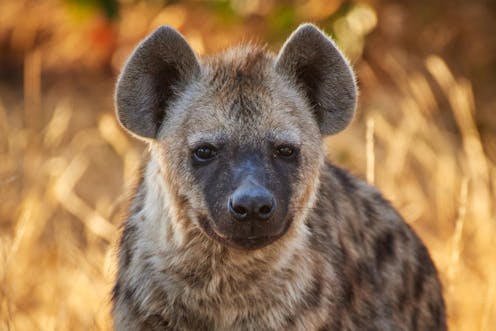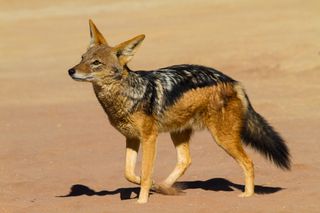
Ostrich is the flightless also the largest living bird on earth. They roam African savanna and desert lands and get most of their water from the plants they eat.
OSTRICH CLASSIFICATION
Kingdom: Animalia
Phylum : Chordata
Class : Aves
Order : Struthioniformes
Family : Struthionidae
Genus : Struthio
Species : Struthio camelus
Do you know?
The ostrich has the largest eye of any land animal. Its eye measures almost 5cm across. It's bigger than its own brain!

PHYSICAL APPEARANCE
Females and young ostriches have brown feathers instead of black to camouflage them. Both males and females have bare necks and thighs. This skin is blue or pink in males and pinkish grey in females. Ostrich have long necks, small heads, large eyes, long, powerful legs, and two toes on each foot. Ostriches have great vision and because of their strong legs can run at 70 km per hour.

SIZE
Females and young ostriches have brown feathers instead of black to camouflage them. Both males and females have bare necks and thighs. This skin is blue or pink in males and pinkish grey in females. Ostrich have long necks, small heads, large eyes, long, powerful legs, and two toes on each foot. Ostriches have great vision and because of their strong legs can run at 70 km per hour.

SIZE
Height: They can reach a height up to 2 m
Weight: 135 kgs

HABITAT
Weight: 135 kgs

HABITAT
Low rainfall areas.

DISTRIBUTION

DISTRIBUTION
Natural distribution is in the drier regions of Africa, including southern Africa, Sudan, Kenya and Tanzania. In South Africa, you will see plenty of Ostriches in Oudtshoorn in the Western Cape. Oudtshoorn is home to the world's largest ostrich population and a number of specialized ostrich breeding farms. They can also be found at the Rietvlei Nature Reserve between Pretoria and Johannesburg, Spitskop Nature Reserve just outside Upington in the Northern Cape, and the Groenkloof Nature Reserve in Pretoria, as well as throughout the whole of the Karoo.

DIET

DIET
Shoots, leaves, flowers and seeds make up most of their diet but they will also eat insects, lizards and other creatures available in their often harsh habitat.
SOCIALIZATION
SOCIALIZATION
Ostriches are not very social birds. They live in small herds that typically contain less than a dozen birds. Alpha males maintain these herds and mate with the group's lead hen.

REPRODUCTION & life cycle

REPRODUCTION & life cycle
Ostriches nest in the dry season. The male will make several shallow scrapes in his territory. The lead female then lays up to 12 eggs over the next 3 weeks. Other females may lay eggs in this same nest, but only the male and lead female will guard and incubate the eggs. The incubation period is six weeks. Despite the constant watch of the male and female, less than 10 percent of the eggs will hatch. Those that do are fully developed when hatched. Hatchlings are fawn in colour with dark brown spots and a 'cape' of down on the back. By the time they are a year old ostriches will reach their full height.

 INCUBATION
INCUBATION

 INCUBATION
INCUBATION
Incubation takes 6 weeks, it can be with the ostrich or with machine.
LIFE EXPECTANCY
LIFE EXPECTANCY
Ostriches can live to 30 until 40 years old.



PREDATORS



PREDATORS
Ostrich chicks have many predators including vulture, hyena, and jackal.
SPEED AND MOVEMENT
Though they cannot fly, ostriches are fleet, strong runners. They can sprint up to 43 miles an hour and run over distance at 31 miles an hour. They may use their wings as "rudders" to help them change direction while running. An ostrich's powerful, long legs can cover 10 to 16 feet in a single stride. These legs can also be formidable weapons. Ostrich kicks can kill a human or a potential predator like a lion. Each two-toed foot has a long, sharp claw.
Questions
- Ostrich has two toes. The large one and the small one. The large one has flat nail and used for fast running. What is the small toe for?
- Where does ostrich generally live?
- How long is the incubation of the ostrich's eggs take time?
- Ostrich is a flightless bird, yet it still has wings. What are the wings for?
- What is the name of ostrich's body part that used for excess body heat during the hottest hours of the day?

Comments
Post a Comment